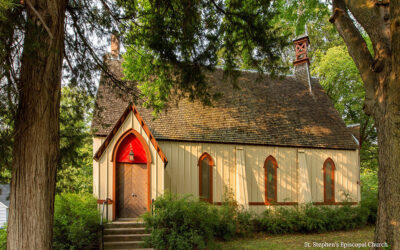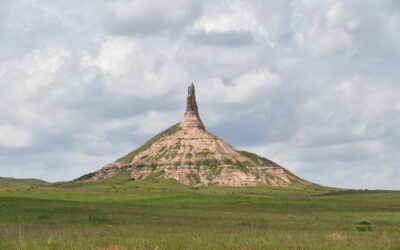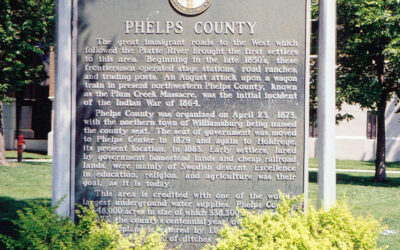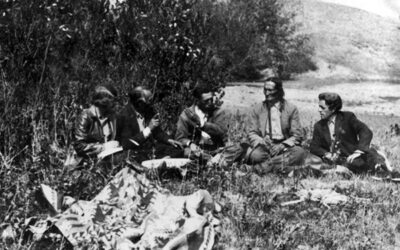There has been a lot of buzz lately about the United States Postal Service and the essential public service it provides. Not only does it ensure our letters and important documents arrive on time, but it is a lifeline for small businesses and people who need medication delivered. It enables mail-in voting when people are away or cannot vote in-person, and it employs nearly 100,000 veterans! The USPS is also the only mail service that serves remote, rural areas.
The subject of today’s post reflects that important role. The object is a terracotta maquette for a mural by Kansas artist Waylande Gregory, which once hung in the Columbus, Kansas, post office. Gregory was commissioned by the Works Progress Administration in 1939 to create the mural. The WPA was a New Deal program that invested heavily in public art in everyday locations as a way to boost the economy during the Great Depression.
The maquette is a terracotta bas relief (meaning “low relief”) that shows a postman on horseback delivering mail to a country mailbox with a group of horses in the field behind the fence.

Before treatment of the Waylande Gregory maquette.
The relief came to the Ford Center to be treated for an upcoming exhibit on Waylande Gregory at the Marianna Kistler Beach Museum of Art at Kansas State University in Manhattan, KS. They were in fair condition. There were small chipped losses along the edges and scratches on the surface. The larger losses to the corners of the far-right sections were going to be left as-is. The primary issue was the level of surface dirt and grime present, making some areas nearly black. There were also paint drips and thick residues present that disrupted the visual appeal of the mural.

On the left, you can see how dirty the mural sections were when we began to clean them. On the right is a gel test we performed to find the best method to lift the dirt and grime.
After before treatment photos were taken, the terracotta tiles were vacuumed using a variety of brushes to get into the cracks, crevices, and rough surface. The surface was cleaned with soot sponges. The paint and other drips were reduced mechanically with skewers and scalpels.
Further testing was carried out to determine the most appropriate solutions to clean the panels. Various poultice gels for cleaning were created and tested using a gelling agent and a range of solvents of varying polarity.
Objects Conservator Rebecca Cashman uses cotton poultices to clean the terracotta mural.
After much testing, the best cleaning solution was applied to cotton pads that were then tamped down with a stencil brush to ensure that contact was made with recessed areas. These were applied to the fronts and sides overall. These were then rinsed with cotton pads dampened with water.
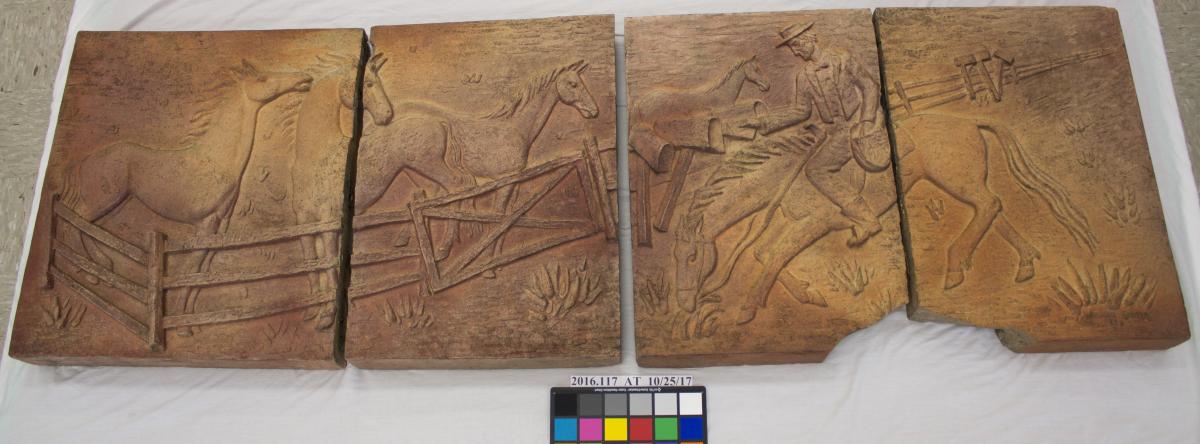
After treatment, the mural tiles appear closer to their original appearance.
Where necessary, areas of loss were toned to match the surrounding areas. Particularly dark areas were also lightened with pigments.
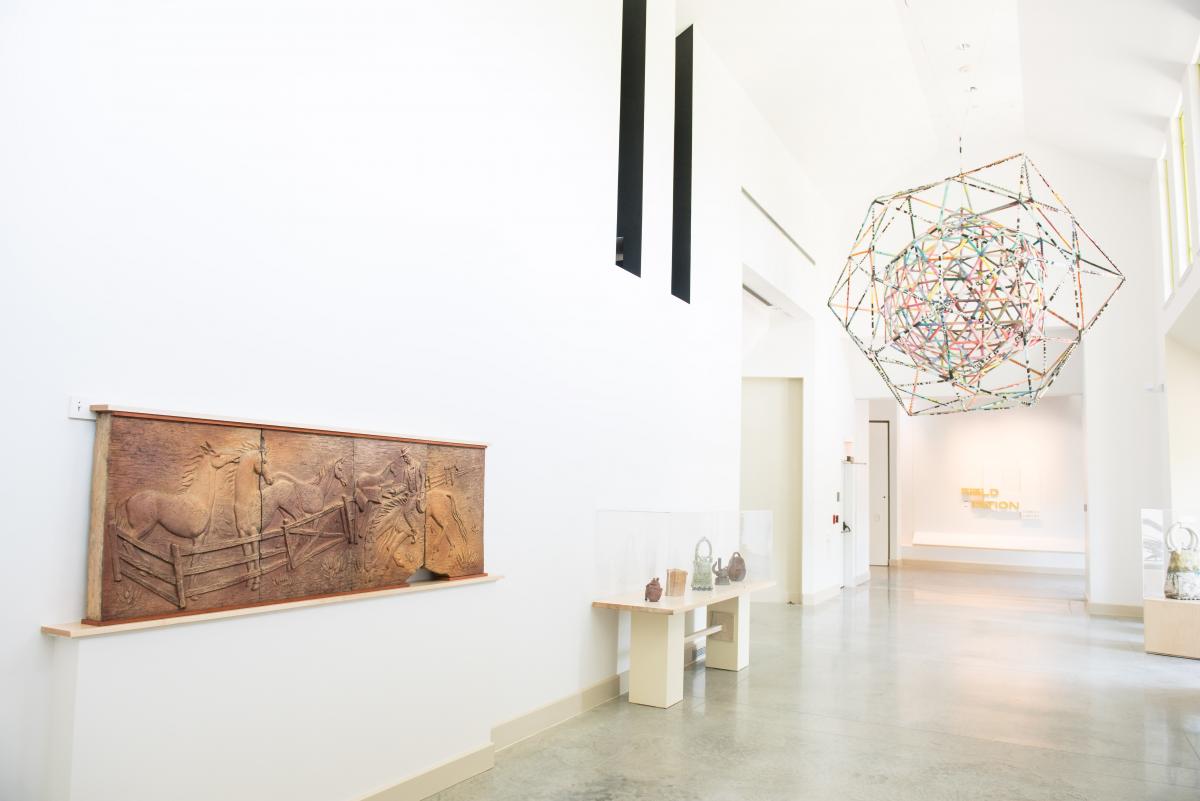
The Waylande Gregory maquette on display at the Beach Museum. Waylande Gregory, R.F.D. (maquette for mural), 1939, terra cotta, Kansas State University, Marianna Kistler Beach Museum of Art, 2016.86. Photos are courtesy of Kansas State University Photo Services.
We don’t often get photos of pieces we’ve treated once they’re back home. But the Beach Museum was kind enough to share photos with us of the maquette installed for the Gregory Exhibit. Because of the pandemic, Waylande Gregory: Art Deco Ceramics and the Atomic Impulse will now be released as a virtual exhibition by Kansas State University’s Marianna Kistler Beach Museum of Art. Find it at www.beach.k-state.edu after late October 2020. And don’t forget to support the United States Postal Service!

